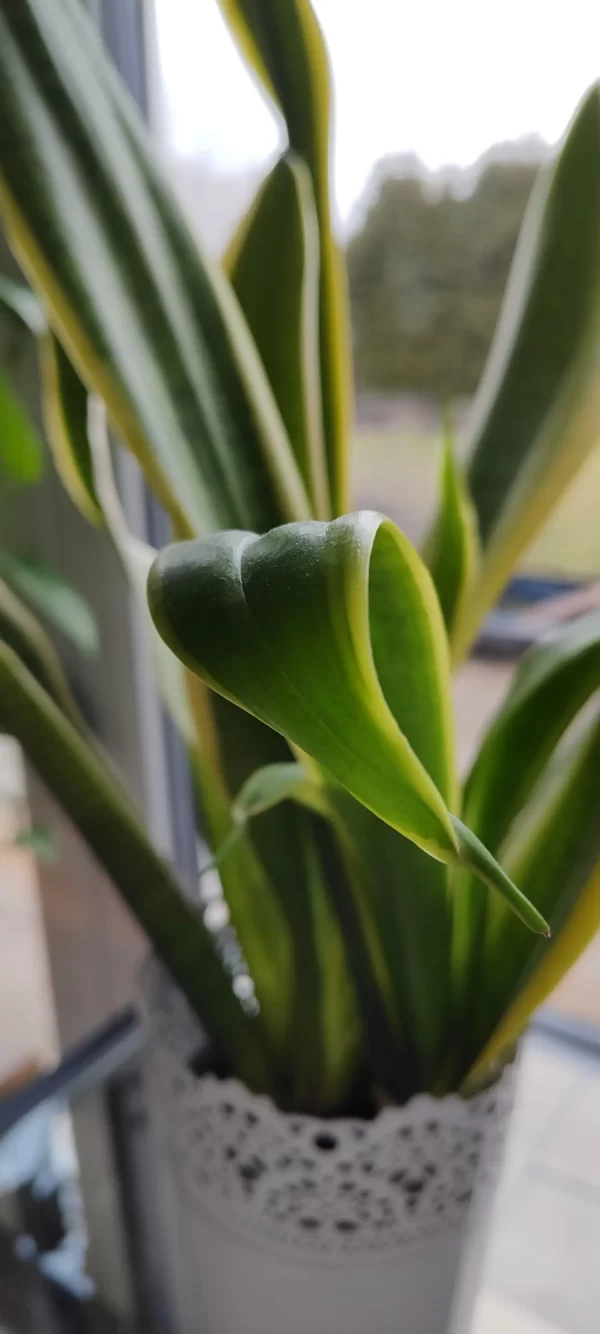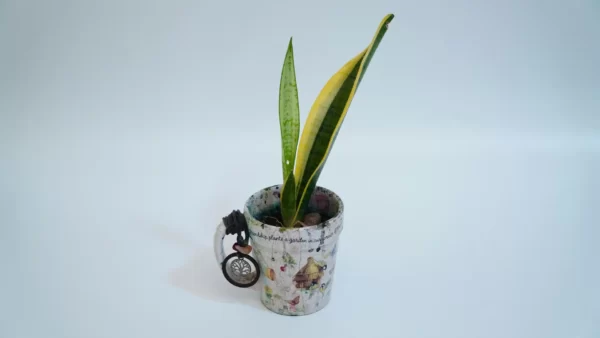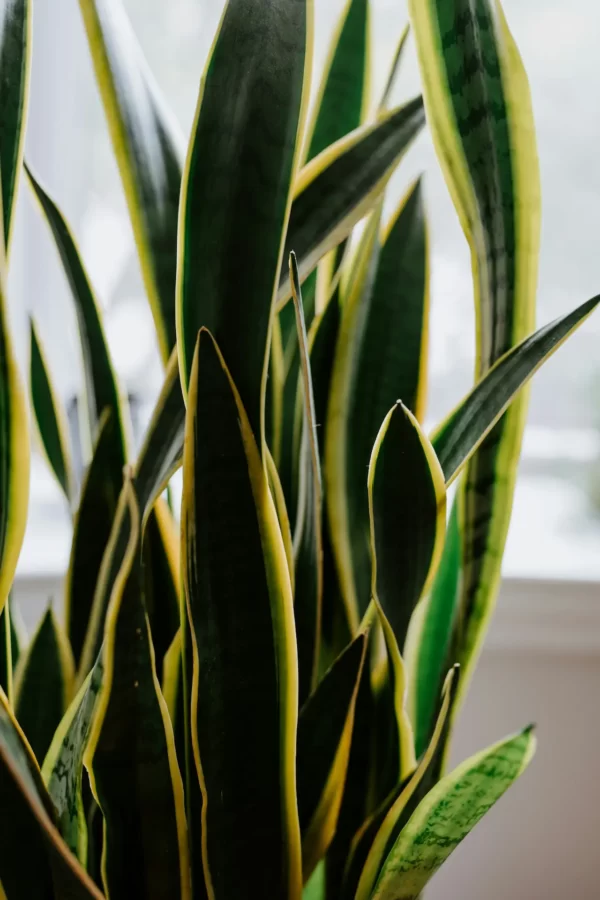Dive Into the World of Snake Plants & Coffee Grounds
Hey there! Ready to journey through the intriguing combo of snake plants and coffee grounds? In this read, we’re about to uncover if snake plants actually benefit from coffee grounds as a fertilizer. Jump in, and let’s get started!
Do snake plants like coffee grounds?
Yes, snake plants can benefit from coffee grounds used as a natural fertilizer. Coffee grounds provide a slow release of nitrogen, enriching the soil and supporting healthy growth. However, it’s important to use them in moderation to avoid overfertilization and maintain soil pH balance.
Meet the Snake Plant
Getting Acquainted
First off, let’s shine the spotlight on our main character, the snake plant. Known in the science world as Sansevieria, these guys are a hit in the indoor plant scene. Why? They’re not just good-looking with their tall, patterned leaves but also superheroes in purifying the air and super easy to take care of. They’re like the low-maintenance friends everyone loves – thriving in various sizes and styles.
The Scoop on Coffee Grounds
From Brew to Bloom
Now, let’s talk about the unsung hero of your morning routine – coffee grounds. The remnants of your daily coffee fix are not just waste but a treasure trove of nutrients, especially nitrogen, crucial for plant growth. It’s an open secret among gardening enthusiasts that coffee grounds can turn into a stellar, eco-friendly fertilizer, giving the soil a nutrient boost.
Nourishing Snake Plants: A Deep Dive
The Nutritional Blueprint
Alright, let’s unpack the nutritional recipe for snake plants to thrive. Every plant, snake plants included, needs a balanced diet of nutrients to stay healthy and vibrant. The big three – nitrogen (N), phosphorus (P), and potassium (K) – play starring roles in their growth saga. For snake plants, with their statuesque leaves reaching for the sky, nitrogen takes the lead role, fueling their leafy expansion.
Why Nutrients Matter
Each nutrient in the trio has its own mission. Nitrogen is the builder of proteins and chlorophyll, the green pigment crucial for photosynthesis – the magic that turns light into life. This process is the plant’s way of feeding itself, ensuring it grows strong and healthy.
When Nutrients Fall Short
But here’s the thing: if snake plants don’t get enough of these nutrients, particularly nitrogen, they start showing signs of distress. Yellow leaves and stunted growth are SOS signals for nutrient deficiency. Thus, ensuring they get their fill of these essential nutrients is crucial for a thriving snake plant.
Coffee Grounds Unveiled
Beyond the Brew
Diving deeper into coffee grounds, these aren’t just the remnants of your morning caffeine fix. They’re a rich blend of organic matter, including nitrogen – the very nutrient our snake plant friends are eager for.
The Composition of Coffee Grounds
Coffee grounds are more than just leftover brew; they’re a complex mix of coffee bean bits, oils, minerals, and other organic compounds. The highlight? They’re a decent source of nitrogen, making them a potentially valuable addition to your plant care routine.
The Perks of Using Coffee Grounds
Opting for coffee grounds as fertilizer has its perks. It’s a green way to repurpose your coffee waste, plus it can enhance soil structure and moisture retention. Moreover, the gradual release of nitrogen from the grounds means a constant nutrient buffet for your snake plant, supporting steady growth and vibrant health.
Sprucing Up Snake Plants with Coffee Grounds
How to Brew Up a Healthy Snake Plant
Thinking about giving your snake plant a caffeine kick? Here’s your guide to doing it right with coffee grounds.
Step-by-Step to Green Glory
Gathering Your Grounds
Kick things off by saving those coffee grounds from your morning brew or hit up your local café for their daily surplus.
Drying Out
Let these grounds dry thoroughly to sidestep any moldy mishaps and ease your sprinkling process.
Even Spread
Dust the dry coffee grounds across your snake plant’s soil, keeping the layer light to avoid any soggy situations.
Coffee Grounds 101: Best Use Practices
Embracing coffee grounds as part of your plant care routine comes with a set of golden rules:
Moderation is Key
A little goes a long way. Use coffee grounds as a nutritional booster alongside your regular plant food, not as its replacement.
Nutritional Balance
Keep in mind, that your snake plant craves a varied diet. Stick with a comprehensive fertilizer to cover the full spectrum of nutrient needs.
Watchful Eyes
Monitor your plant’s reaction to this new coffee diet. Signs of distress? Dial back on the grounds.
pH Check
Given the slight acidity of coffee grounds, keep tabs on your soil’s pH levels to ensure they align with your snake plant’s preference for a slightly acidic to neutral environment.
A Word of Caution: Embracing Coffee Grounds with Care
While integrating coffee grounds into your snake plant’s care routine can spell numerous benefits, it’s wise to tread lightly to navigate potential pitfalls successfully.
The Thin Line of Overfertilization
The slow-release nature of nutrients from coffee grounds might tempt you to overuse them, thinking they’re harmless. However, the cumulative effect can sneak up, potentially leading to overfertilization. Symptoms such as leaf scorch, slowed growth, or even root harm can emerge. The key to prevention? Use coffee grounds sparingly and always keep an eye out for how your snake plant responds.
The pH Balance Act
Given the slight acidity of coffee grounds, there’s a delicate balance to maintain in your soil’s pH levels. Snake plants have a sweet spot for slightly acidic to neutral soil conditions. The continuous application of coffee grounds could tip this balance, making the soil too acidic. It’s crucial to monitor the soil’s pH periodically and make adjustments to ensure it remains within the ideal range for your plant’s health and happiness.
Exploring Fertilization Alternatives for Snake Plants
While coffee grounds bring a unique set of benefits to the table, diversifying your fertilization strategy can ensure your snake plant receives all the nutrients it needs for optimal growth.
The World of Commercial Fertilizers
These powerhouse nutrients are engineered to deliver a balanced diet directly to your plant. Available in granules, liquids, or slow-release forms, commercial fertilizers make it easy to manage how much and how often your snake plant feeds, offering a precision that’s hard to achieve with coffee grounds alone.
The Organic Touch of Compost
Turning kitchen scraps and yard waste into compost isn’t just an eco-friendly move; it’s also a fantastic way to provide your snake plant with a rich, balanced nutrient mix. Beyond feeding your plant, compost improves soil structure, enhancing water retention and aeration.
The Gentle Efficiency of Worm Castings
Much like coffee grounds, worm castings release nutrients at a pace that plants love, offering a nutrient-rich, yet gentle feeding option. They not only feed your snake plant but also enhance the soil’s overall health and structure.
Organic vs. Synthetic: Choosing Your Path
When deciding between organic and synthetic fertilizers, it’s essential to consider your gardening philosophy and the specific needs of your snake plant.
- Organic Options. Favoring coffee grounds, compost, and worm castings means leaning into a more natural, sustainable approach. These methods not only feed your plant but also foster a healthier soil ecosystem over time.
- Synthetic Solutions. If you’re looking for targeted, immediate results, synthetic fertilizers can provide precise nutrient ratios. However, it’s crucial to use them responsibly to avoid environmental harm and potential damage to your plant.
Exploring Fertilization Alternatives for Snake Plants
While coffee grounds bring a unique set of benefits to the table, diversifying your fertilization strategy can ensure your snake plant receives all the nutrients it needs for optimal growth.
Mastering Snake Plant Care: Beyond the Brew
Elevating your snake plant’s health involves more than just a sprinkle of coffee grounds. Dive into these essential care tips to ensure your green buddy not only survives but thrives.
Water Wisely
- Just Enough H2O. The golden rule for snake plants is to avoid overwatering. Let the soil dry out before giving them another drink. This is particularly crucial in winter when their thirst decreases significantly.
- Drainage is Crucial. Plant your snake friend in soil that doesn’t hold onto water for too long to avoid root rot.
- Pick the Right Pot. A pot with drainage holes is non-negotiable. It’s your best bet to avoid soggy soil conditions.
Sunlight and Temperature: Finding the Sweet Spot
- Let There Be Light (But Not Too Much). Snake plants are pretty flexible with their lighting needs. They love indirect sunlight but will forgive you if they’re placed in lower light conditions or if they catch a few more rays.
- Steady Temperatures. Aim to keep your space within the cozy range of 70-90°F (21-32°C). While snake plants can adapt to change, they prefer to avoid the drama of temperature swings.
- Draft-Free Zone. Keep them away from spots that could expose them to sudden colds, ensuring a stable and stress-free environment.
FAQs
Can I use coffee grounds on all types of snake plants?
Yes, most snake plants will happily accept coffee grounds, but keep an eye on how each plant responds.
How often should I apply coffee grounds as fertilizer?
Light applications every month or two should suffice but adjust based on your plant’s reaction and growth.
Are there any specific brands of coffee grounds that are best for plants?
Any brand works, as long as it’s plain coffee grounds without added flavors or additives.
What are the signs of overfertilization in snake plants?
Yellowing leaves, stunted growth, or leaf burn can indicate too much of a good thing.
Can I use coffee grounds from decaffeinated coffee?
Absolutely! The nutrient content is similar, so feel free to use decaf grounds if that’s what you brew.







